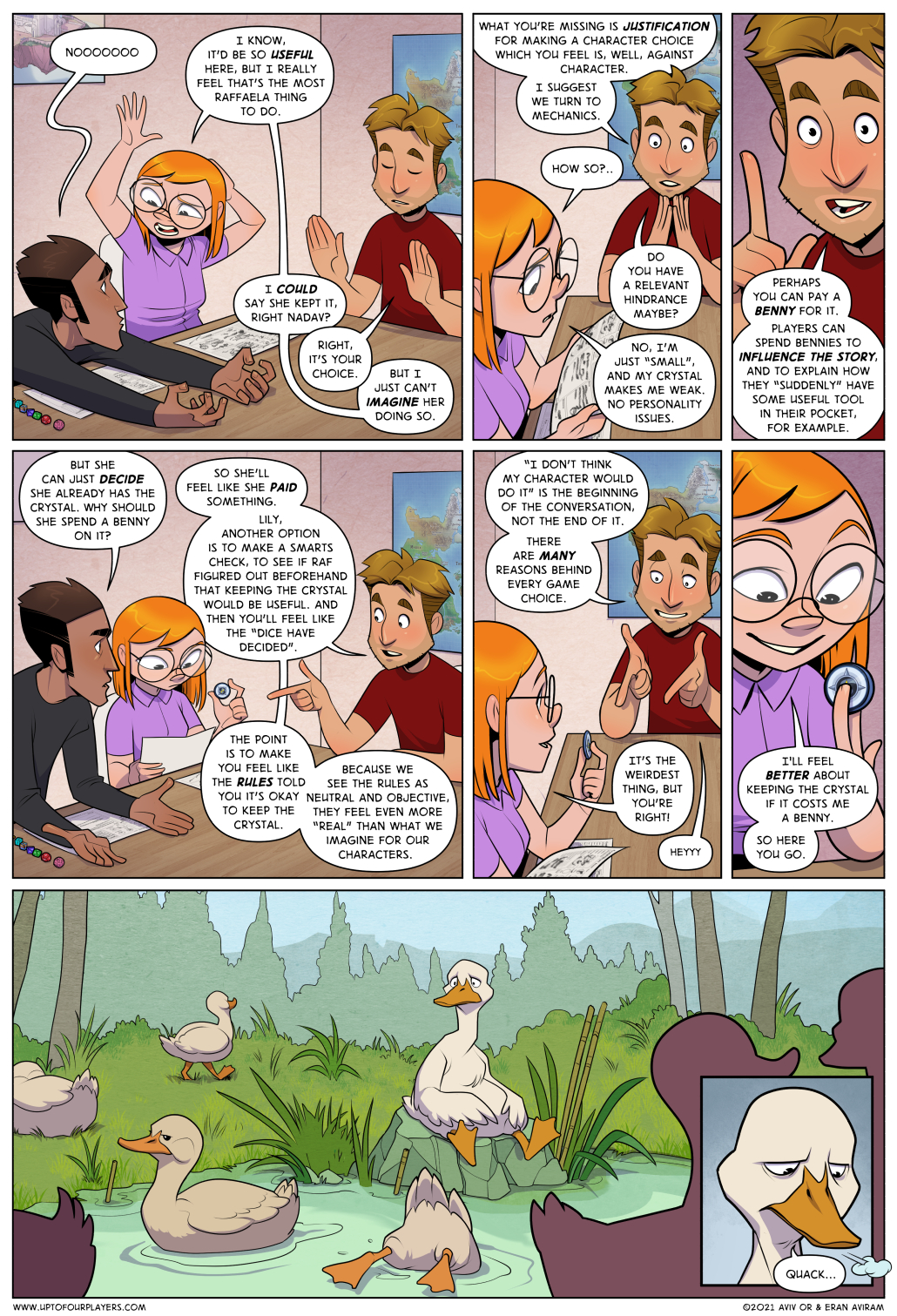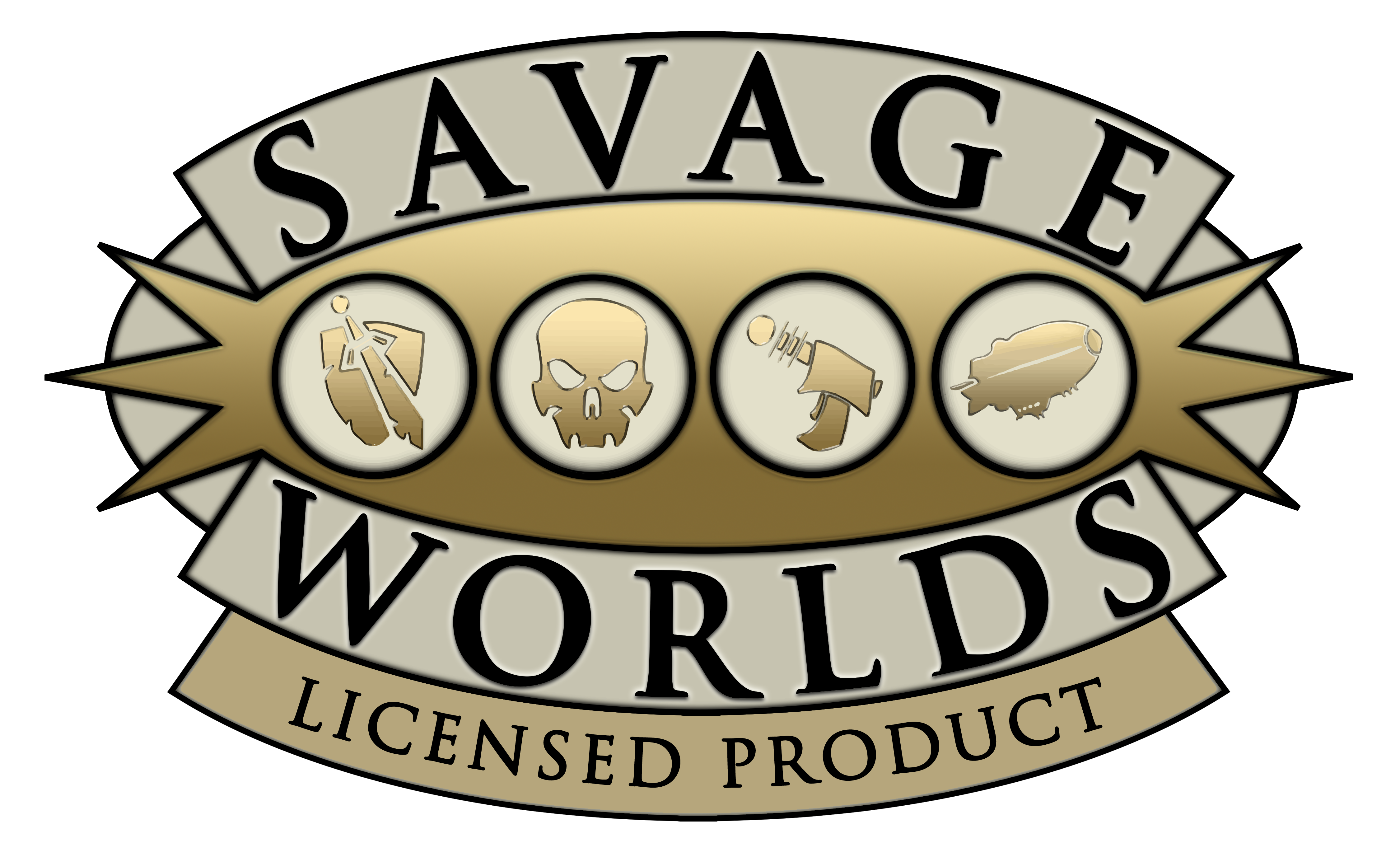Our goal is not “portray characters correctly.”
It could be Lily‘s goal (we each have our own goals), but it’s not our goal, as the group. That’s not what we said we’ll be doing in this game. Nadav addressed this before, on a different matter.
Many old fashioned groups may disagree, claiming that “playing our characters correctly” must be our goal, because it’s core to the RPG experience. That is not, however, the case. Portraying a character is core, yes, as is maintaining suspension of disbelief; I would claim that without these two, a game cannot be said to have roleplaying elements. The old fashioned have an understanding of the medium which requires the portrayal to stay “correct” in order for them to maintain their suspension of disbelief, but newer games and gamers have little trouble separating the two (allowing the player to lean toward the “we’re the audience” side of the scale in order to make some decisions which look impossible from the “we’re the characters” side of the scale).
Let’s not even get into what “correct” means. Because it could mean “honestly according to what I currently believe she will do”, but it could also mean “according to the principles and concepts I’ve developed and written down” (with which you may or may not currently agree!), or it could mean “according to what-would-character-archetype-do”.
Look at this page – Lily first claims that Raf would have thrown the Crystal aside, but… she’s not a stupid Agent. She could come to realise it’ll be useful with their mission (with a Smarts check, perhaps). Why does the first thing that comes to mind about how your character behaves, should indicate the “correct” behaviour? Are we just ruled by instincts?
The thing is, we’re all happy to relax this “correctness” at different times. Even the old fashioned are usually very happy to forgo all correctness if it leads to something hilarious, or some crazy in-game moment. That’s because the game’s goal is not, as they might claim, to portray characters correctly; it’s just one of the methods they use to reach that goal.
And what is that goal? Depends on the group. Talk about it and decide. Bring it to the forefront, to be something (mostly) clear. Use examples and touchstones to make sure you’re on the same page. And when something happens around the table – whether in or out of character – that puts that goal at risk, consider what tools you have to put you back on course.
Phew, all of this and I haven’t even got to the topic I wanted to talk about, which is the authority of rules and how to use it as a tool. Next time perhaps!




